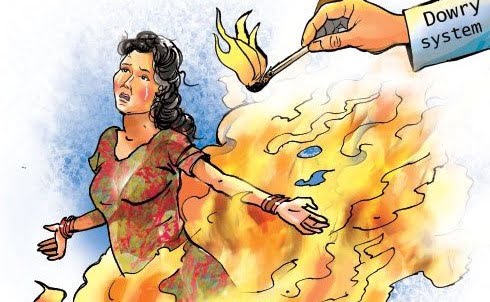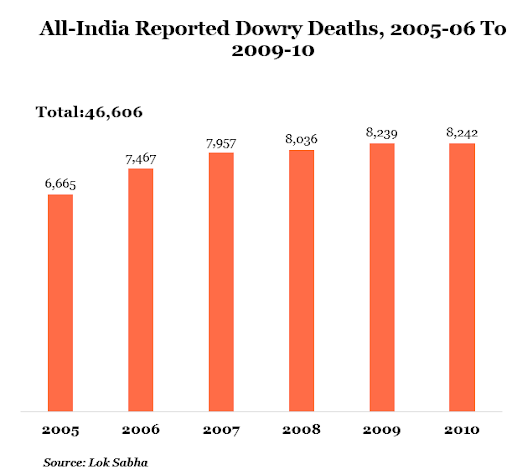In India, dowry or Dahej is a common practice. It is referred to the transfer of payment in the form of cash or kind from the bride’s family to the groom’s family. Initially, this practice came into being to help bear the expenses of the marriage with the groom’s family or even to share the bride’s ancestral property with the family to be. However, it has now materialized into a sort of insurance. Instead of voluntary, this process has now become institutionalized and is expected by default. In extreme cases, when the bride’s family refuses to or is unable to pay the dowry, it results in bride abuse, in many cases abuse of the bride’s family, discrimination, mistreatment, and ultimately leading to cancellation of the wedding.

These cases highlight the pre-existing deep-rooted prejudices against women in Indian society. While the issue of dowry is largely condemned, it is still prevalent. This means that while people may be criticizing it on one end, they may be involved in it on another. It can be agreed that the problem with the dowry system began when it turned from a social deed to social necessity by translating itself into a matter of pride.
A study carried out by the United Nations found that dowry-related deaths account for more than 58% of female homicide and India has 2.8 % more female homicides as compared to other countries (National Herald). About 9,000 cases of dowry (India Spend) and 2,500 cases of bride burning (Youth ki Awaaz) are reported every year. This number consistently increases by 1-2% each year. The states of Bihar, Madhya Pradesh, and Uttar Pradesh reported the highest share of dowry-related deaths in India.
We must keep in mind that the actual figures of dowry and dowry-related incidences may be much higher when compared to the police report because of the number of under-reporting incidences.
The Dowry Prohibition Act, 1961, (Act No. 28 of 1961) was launched by the GoI to outlaw dowry, however, the ban has been a challenge to enforce. It lays a penalty on demanding dowry, giving dowry, or taking dowry. Despite this, families who engage in a dowry are not worried because they are well aware of the under-reporting of dowry.
Aastha Nishtha Foundation perceives the education of women as one way to prevent dowry. However, one cannot deny that dowry persists in highly educated families as well. So, women empowerment is needed to enable women to take up a stand against society’s prejudices. We are here to spread awareness and encourage women to report cases of dowry and dowry-related incidents that occur to them or to women they know with the assurance that the cases will be pursued without interference.

Dowry is an illustration showing us that we as a society need to question pre-existing norms that have no validity in today’s world. It teaches us to abandon old beliefs that have deviated from the purpose they were intended for. Let us all extend our hands to fight against such evils of our society.
For regular updates about our campaigns and services provided to underprivellage children. We would love to connect with you.
Copyright @ 2020 Aastha Nishtha Foundation. All Rights Reserved. Design and Developed by Themes Glance
